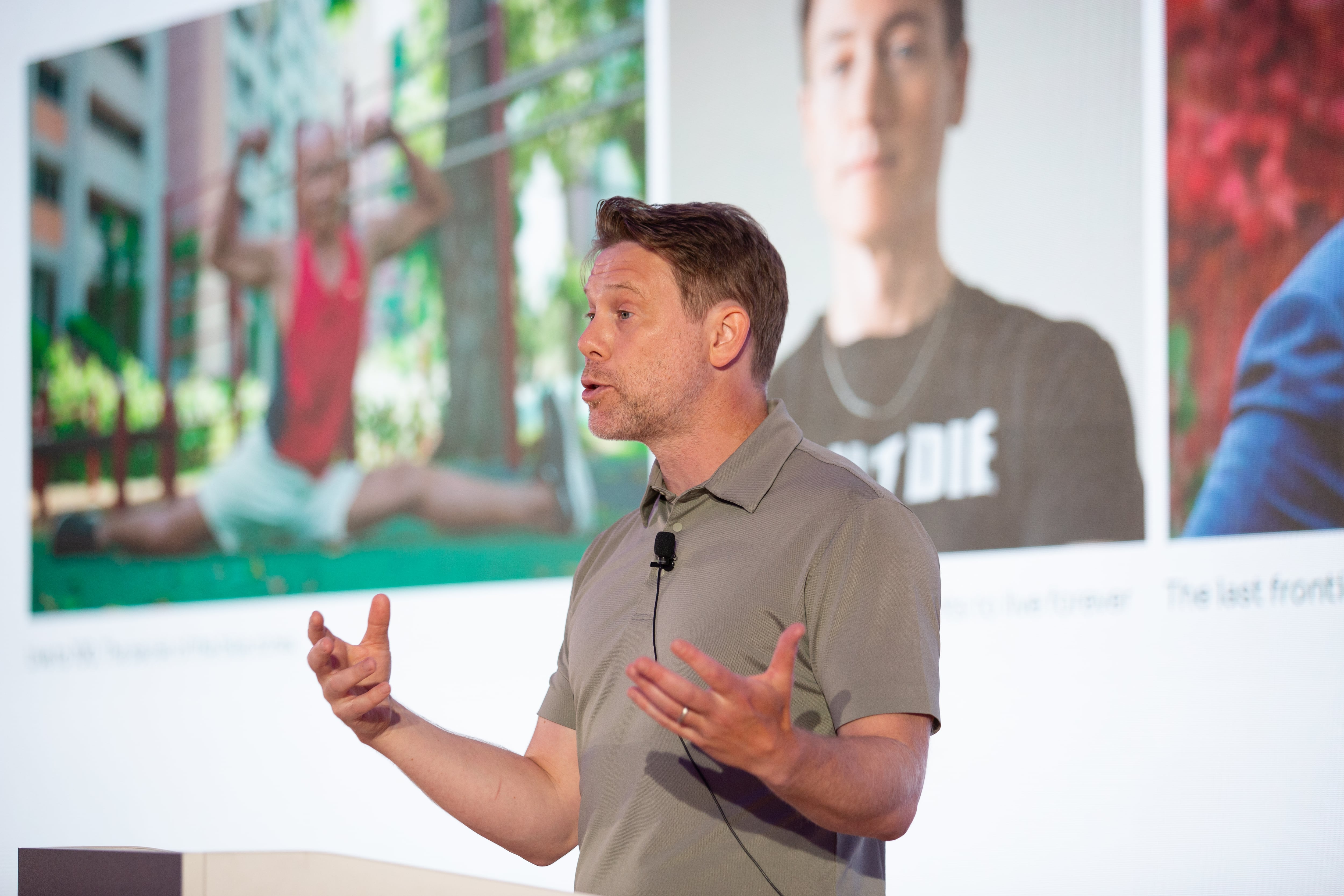Leading the charge are products which target cellular health, with this area of the market seeing rapid growth, according to Nick Morgan, managing director at Nutrition Integrated.
At this year’s Active Nutrition Summit in Vienna (June 23-25), Morgan told delegates that Nutrition Integrated, a specialist market insights company, is already tracking more than 50 brands and 150 products which claim to improve cell health.
“We’ve got a shift in consumers who are looking to do things a little earlier,” he said. “More people are engaging in their health today for the purposes of their future.”
“Longevity brands are trying to find ways to get to the foundational approach of aging,” he added. “And probably the biggest area that consumers are driving, and the one where we’re seeing the fastest amount of product growth, is cellular health.”

The rise of biohacking
This rising interest in biological health has partly been driven by well-known biohackers, such as Bryan Johnson, a 47-year-old entrepreneur who claims to have slowed his pace of aging by the equivalent of 31 years.
Johnson upkeeps a strict anti-aging regimen, taking over 100 supplements a day, rigidly following a specialized diet and exercise plan, and even receiving blood transfusions from his own son.
“Effectively, he is the biohacker,” Morgan said. “He is his own personal experiment, and he is very much presenting it as a proven health intervention. But what he’s actually trying to do is take a foundational approach to shifting health—he’s thinking about the hallmarks of aging.”
Morgan noted that Johnson’s longevity approach is clearly at a ‘very extreme level’, but it has started a conversation—one which has sparked debates about conventional aging and led to a demand for products which tackle aging at the root.
As a result, marketing approaches appear to be moving away from preventing the signs of aging and towards being ‘timeless and eternal’. This is reframing conversations, eroding ‘traditional’ age stages and encouraging consumers to be fearless rather than fearful as they grow older.
Morgan also highlighted that it is now more common for people to reach traditional milestones later in life, adding to the notion that age is more of a moveable concept than something which is set in stone.
“People are spending more time in ‘Kidulthood’,” he said. “If you go back generations, people were getting married, having children, and leaving home earlier. Now, people are extending these life stages to later in life than they’ve ever done previously, and this is shifting the whole perception of what it’s like to be an aging adult.”
What type of cellular health products are gaining traction?
Morgan says beauty from within continues to be successful, with collagen remaining popular as ever. However, the popularity of newer ingredients such as NAD and NMN is rising, likely due to their involvement in numerous cellular processes. But formulations aren’t drifting too far from the norm, Morgan explained.
“[Longevity brands] often take products that have existed for a long time and ‘supercharge’ them even further,” he said. “So, we’re not seeing cellular health as the foundation, we’re just supercharging products that already exist on the market.”
For example, some brands are selling greens powders with the addition of certain ‘longevity molecules’ in order to market them as anti-aging solutions.
Female consumers also want to see additional benefits, he added, particularly for skin, hair and nails. There is also an untapped potential in the market of ‘legacy consumers’, Morgan said, with this older generation increasingly looking for life-extending solutions.
“I suspect we will start to see cellular health come into some performance products,” he said. “I still believe there is a white space for legacy consumers […] as it’s these long-term consumers who are really start to engage in things more proactively around longevity.”
For these reasons, Morgan says cellular health is currently the primary area of interest for many brands, with a growing number challenging the traditional convention of age.
“This is a really fast emerging area,” he said. “It’s saying to people: ‘What are you going to do today for the purpose of tomorrow?’”





